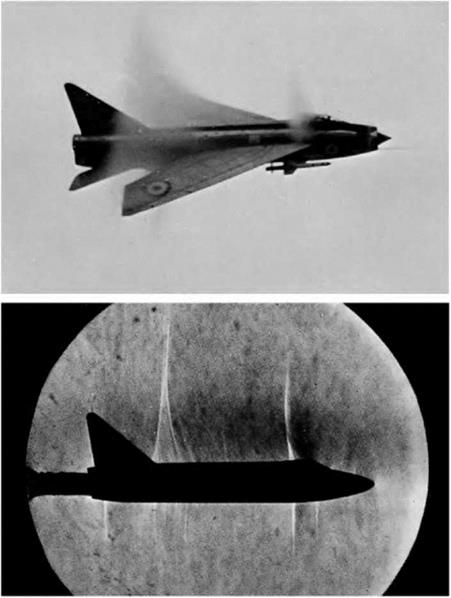Mach Number
The time has come to introduce a term that is now on everybody’s lips in connection with high-speed flight – Mach Number. This term is a compliment to the Austrian Professor Ernst Mach (1838-1916), who was professor of the history and theory of science in the University of Vienna, and who was observing and studying shock waves as long ago as 1876. Incidentally, his
|
|
Fig 11В Shock waves
(By courtesy of the former British Aircraft Corporation, Preston)
Top: Lightning at M 0.98; low pressure regions above canopy and wing cause condensation, the rear limit of the condensation marks the shock wave.
Bottom: Schlieren photograph of model of Lightning at M 0.98; note the extraordinarily close resemblance to actual flight.
Science of Mechanics, which was published in English in 1893, throws much light on the work of Newton and others, and is well worth reading.
Fortunately the definition of Mach Number is simple. The Mach Number (M) refers to the speed at which an aircraft is travelling in relation to the speed of sound. Thus a Mach Number of 0.5 means that the aircraft is travelling at half the speed of sound. Both the speed of the aircraft and the speed of sound are true speeds.












